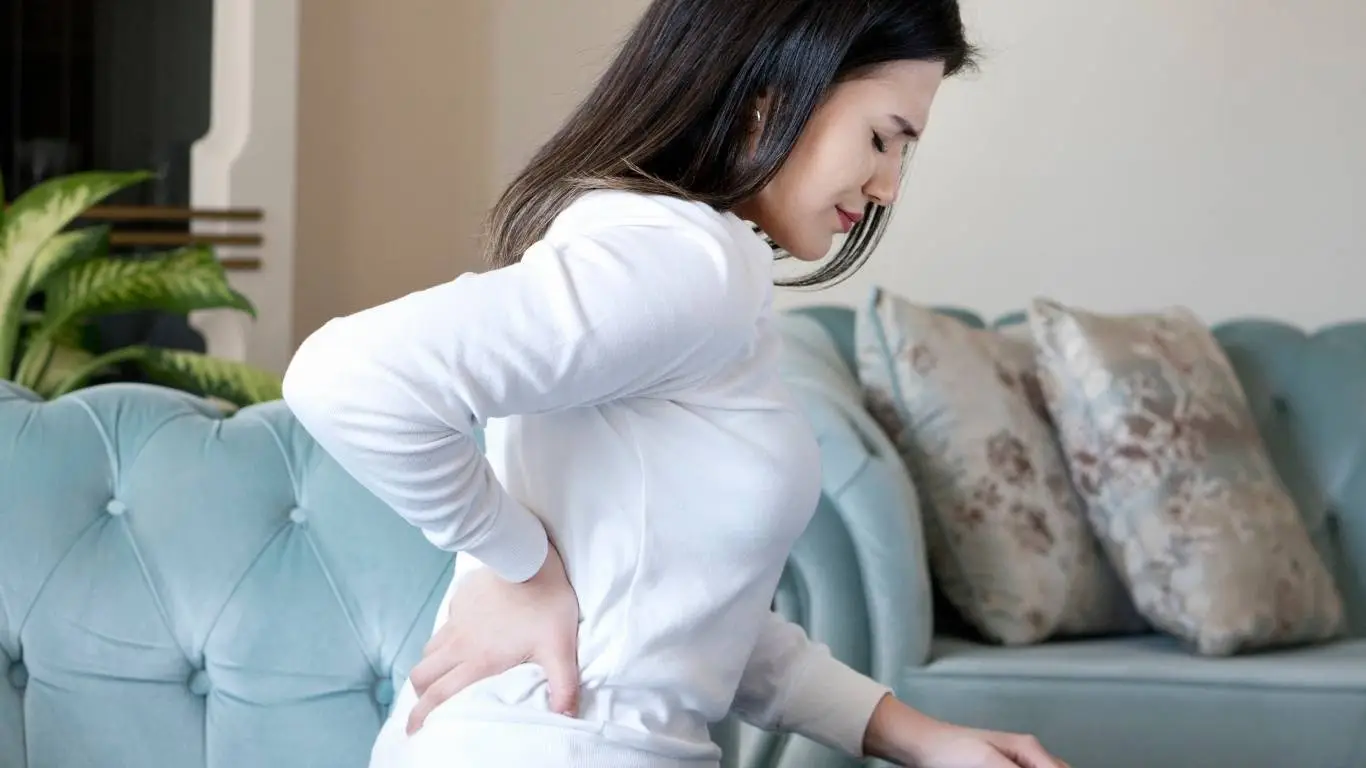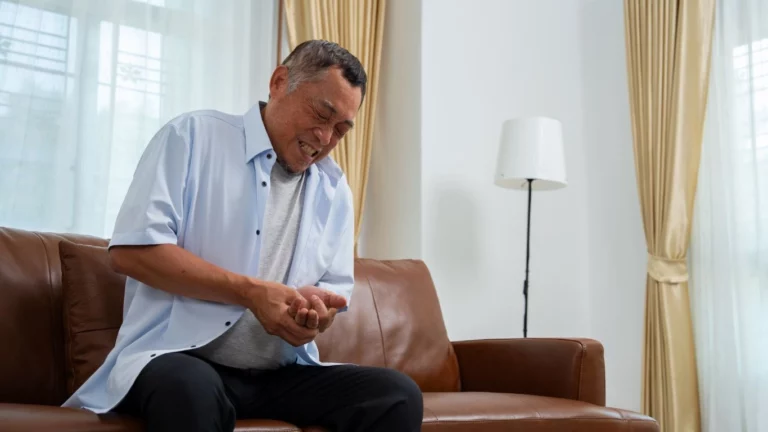SI Joint Instability Symptoms That Shouldn’t Be Ignored
When I first started experiencing nagging pain in my lower back, I brushed it off as just another sore muscle from a workout. Turns out, it was far more than that. Over time, what seemed like a simple ache evolved into a sharp, localized pain that radiated across my hips, made standing for long periods unbearable, and even messed with my sleep. The culprit? SI joint instability. If you’re wondering what that actually feels like—or if you’re possibly dealing with it too—let’s dive into the real-world symptoms and red flags of sacroiliac joint instability, and what you need to know before things get worse.
Understanding SI Joint Instability: The Silent Agitator

So, what exactly is SI joint instability? The sacroiliac (SI) joint is located where your spine meets your pelvis. When this joint becomes unstable, whether due to injury, hypermobility, or degenerative changes, it can create a whirlwind of confusing symptoms that mimic other conditions. I learned this the hard way after months of misdiagnosis and frustration.
Common Symptoms You Might Not Recognize
- Unilateral lower back pain: Usually on one side, right where the spine meets the pelvis.
- Hip and groin discomfort: A strange, deep ache that doesn’t quite feel muscular.
- Sharp pain during transitional movements: Standing up, climbing stairs, or turning in bed may trigger pain.
- Radiating pain down the leg: Not quite sciatica, but similar enough to cause confusion.
- Pelvic instability: That wobbly, unsteady feeling when walking or running.
Many of these symptoms overlap with other back issues like sacroiliac joint dysfunction or even herniated discs, which is why SI joint instability often flies under the radar.
SI Joint Instability vs. Other Lower Back Conditions

The confusion between SI joint instability and other conditions like herniated discs, piriformis syndrome, or even lumbar spine arthritis is real. For a long time, I was chasing the wrong diagnosis—going through physical therapy aimed at disc problems that actually made things worse. Understanding the location and behavior of your pain is critical.
Key Differences to Look For
- Disc pain tends to be centralized and worse when sitting.
- Piriformis pain often causes tingling down the leg.
- SI joint instability flares up with activity and subsides with rest—but not always.
If you’re looking for a deeper dive into these variations, check out our detailed breakdown on sciatica vs. back pain.
Root Causes of SI Joint Instability

While sports injuries and trauma are common triggers, many of us deal with SI joint instability without a specific incident. Mine crept in after months of inconsistent workouts and long hours sitting on a bad office chair. Sound familiar?
Common Culprits Include:
- Pregnancy: Hormonal changes lead to ligament laxity in the pelvis.
- Previous pelvic injuries: Falls or car accidents often destabilize the area.
- Leg length discrepancy: Even minor asymmetries can increase SI joint strain.
- Hypermobility: Conditions like Ehlers-Danlos can make joints too flexible.
- Repetitive stress: Runners and manual laborers are especially at risk. More on runners here.
If you’re curious about how different populations experience back pain differently, the special populations pillar article offers fantastic insights into this.
Why Diagnosing SI Joint Instability Can Be Tricky

Here’s where it gets frustrating. SI joint instability doesn’t always show up on an X-ray or MRI. I went through two scans before my physiatrist finally used manual provocation tests (which hurt like crazy, by the way) to pinpoint the issue. If you feel like your pain story isn’t being heard, you’re not alone.
Helpful Diagnostics:
- Physical examination: Provocation tests like FABER or Gaenslen’s maneuver.
- Diagnostic injections: A local anesthetic into the SI joint can confirm the pain source.
- Advanced imaging: CT scans and MRIs help rule out other issues. Learn more about CT scans for back pain.
When I finally got the right diagnosis, it felt like someone had finally put a name to what I was feeling. And honestly, that’s half the battle.
Initial Steps for Managing SI Joint Instability

Once I knew what I was dealing with, the approach to recovery shifted completely. I swapped out generic stretches for core stabilization exercises, adjusted my sitting posture, and started using a supportive belt. The improvement? Noticeable within a few weeks.
Begin With These Actions:
- Stability exercises: Focus on core and glute activation.
- SI belts: Provide external support to reduce strain.
- Postural awareness: Avoid prolonged sitting or standing on one leg.
- Physical therapy: A therapist with SI joint experience is essential.
Need more practical recovery strategies? You’ll find tons of helpful guidance in our rehab and ergonomics pillar. Or for an overview of the entire topic, the main back pain pillar is your go-to resource.
For more authoritative insights, you can check resources from Mayo Clinic, Cleveland Clinic, and NIH on SI joint-related research and treatment options.
Advanced Treatment Options for SI Joint Instability

When basic physical therapy and belts just don’t cut it, it might be time to explore more advanced interventions. I hit this point after months of up-and-down progress—good days followed by bad weeks. It became clear I needed a more structured and targeted approach.
Interventional Procedures Worth Considering
- SI joint injections: A blend of corticosteroids and anesthetics to calm inflammation and pinpoint the pain source.
- Prolotherapy: An injection-based technique that encourages ligament healing and joint stabilization.
- Platelet-Rich Plasma (PRP): Using your body’s own platelets to promote tissue repair around the SI joint.
Personally, I saw meaningful progress after a guided corticosteroid injection—suddenly my physical therapy exercises became more effective. The inflammation had been holding me back more than I realized.
If you’re exploring interventional relief methods, the article on epidural steroid injections gives helpful context, especially in understanding how inflammation control can accelerate rehab.
When Surgery Becomes an Option

Let’s be real—surgery is a last resort. But in cases of severe SI joint instability that just doesn’t respond to anything else, it might be worth a serious conversation. I’ve spoken with others who’ve undergone SI joint fusion, and while the recovery is no walk in the park, the long-term relief can be life-changing.
What Is SI Joint Fusion?
The procedure involves fusing the sacrum and ilium to eliminate movement and stabilize the joint. It’s minimally invasive these days, often using small implants placed through a tiny incision.
For a detailed look at surgical options, our article on minimally invasive back pain surgery is worth reviewing—even if your condition isn’t disc-related, the surgical insights still apply.
Complementary Therapies That Support Recovery

Recovery isn’t just about exercises and injections. I found that integrating holistic treatments really helped take the edge off pain—and made the bad days more manageable. It also helped rebuild confidence in my body again.
What Helped Me (and Might Help You Too)
- Acupuncture: Helped release deep muscle tension around my pelvis.
- Massage therapy: Particularly useful for glute and hip tightness.
- Heat and cold therapy: Rotation of the two helped soothe flare-ups.
Explore these further in our deep dive into acupuncture and massage therapy techniques.
Daily Habits That Reduce SI Joint Pain Flare-Ups

Managing SI joint instability isn’t just about what you do in the clinic—it’s also about what you do every single day. My recovery turned a major corner when I began rethinking my everyday habits: how I sat, how I drove, and how I walked.
Everyday Adjustments That Matter
- Invest in ergonomic seating: A good chair made more difference than I ever expected. Here are our top chair picks.
- Use lumbar support cushions: Especially for long drives and desk work.
- Modify workouts: Avoid asymmetric movements or unilateral loading without proper control.
- Stretch smart: Targeted glute and hamstring mobility, not random stretches.
Want to go deeper into setup adjustments? The guide on lifestyle and natural remedies is packed with simple, doable changes that protect your joints long-term.
The Mental Side of Chronic SI Joint Pain

I can’t stress this enough: dealing with SI joint instability takes a toll on your mindset. There were days I felt defeated, wondering if I’d ever sit through a dinner or drive without flinching. If you’re there right now—trust me, I get it.
Ways to Stay Mentally Resilient
- Mindfulness meditation: Helped me stay grounded during pain spikes. Learn more in our guide on mindfulness for pain.
- Track small wins: Journaling progress kept me motivated when big changes felt slow.
- Join support groups: Talking to others going through the same thing made a massive difference.
If mental health is impacting your pain levels, check out the deeper article on back pain and depression connection. You’re not alone—and there are ways forward.
Staying Ahead of Future Flare-Ups

Once symptoms calm down, the goal is staying ahead of the pain—not reacting to it. I still do core stabilization drills three times a week. It’s not glamorous, but it keeps me pain-free, mobile, and off the sidelines.
What I Stick With Today:
- Routine strength training: Glutes, hamstrings, and deep core muscles.
- Weekly yoga: Keeps my pelvis and hips moving smoothly. These yoga poses are golden.
- Smart shoes: I ditched flat soles for supportive footwear. It matters.
To wrap it up—if you’re living with SI joint instability symptoms, you’re not stuck. With the right approach, you can absolutely reclaim your movement, your freedom, and your life. Start exploring everything from prevention to long-term relief in the causes of back pain pillar and don’t forget to check in with the main back pain hub for more expert-driven insights.
Also worth checking out for updated best practices and clinical guidance: Hopkins Medicine, AAOS OrthoInfo, and Mayo Clinic.

Camellia Wulansari is a dedicated Medical Assistant at a local clinic and a passionate health writer at Healthusias.com. With years of hands-on experience in patient care and a deep interest in preventive medicine, she bridges the gap between clinical knowledge and accessible health information. Camellia specializes in writing about digestive health, chronic conditions like GERD and hypertension, respiratory issues, and autoimmune diseases, aiming to empower readers with practical, easy-to-understand insights. When she’s not assisting patients or writing, you’ll find her enjoying quiet mornings with coffee and a medical journal in hand—or jamming to her favorite metal band, Lamb of God.




